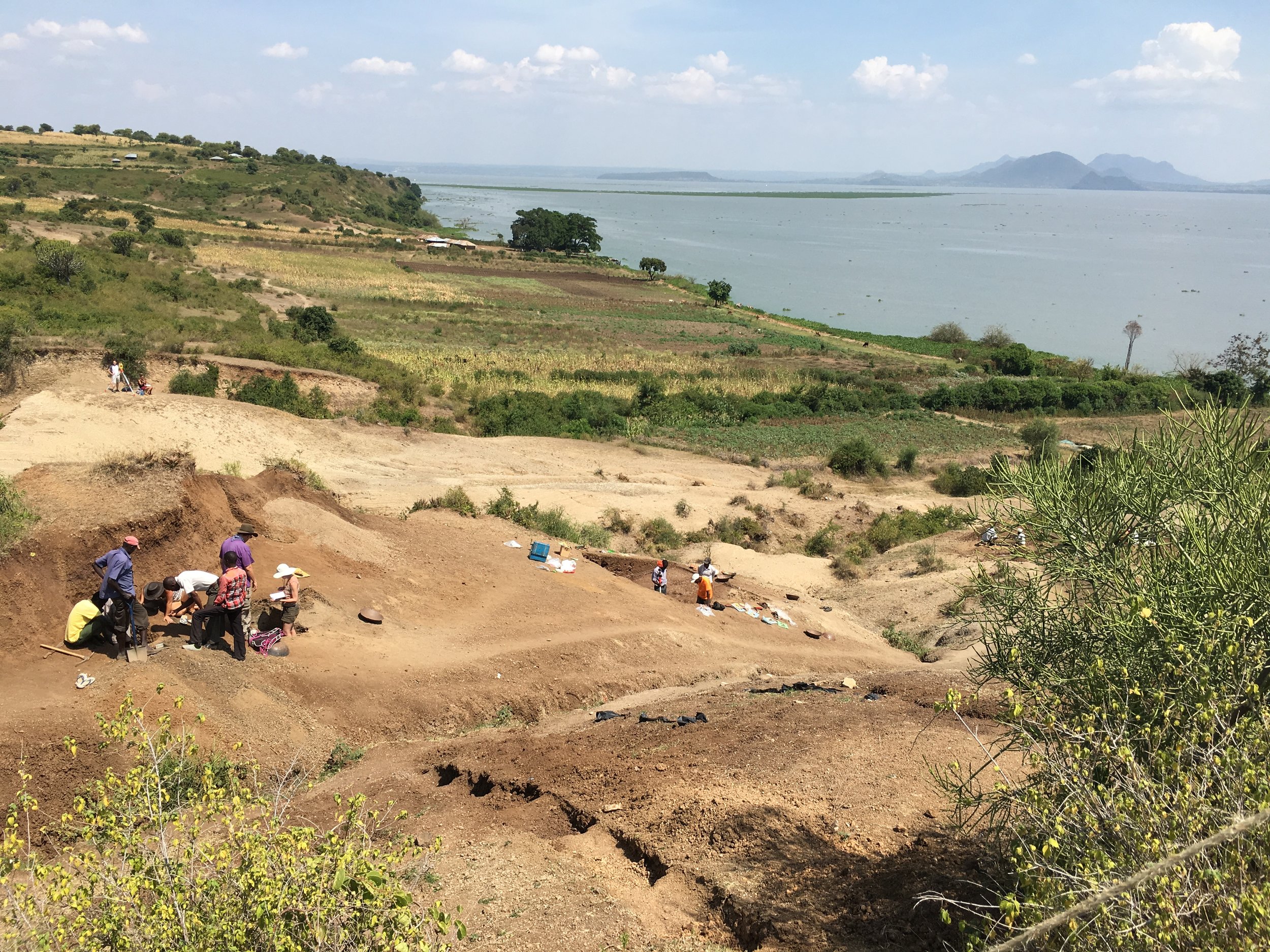My research addresses the ecology and evolution of early hominins, using stable isotopes to investigate past changes in ecosystems, landscapes, and climates. Complementary isotope studies of modern African ecosystems play an important role in my approach to paleoecology. Main research areas are described in more detail below.
The Isotopic Paleoecology Laboratory at the University of Oregon supports research in paleoanthropology, archaeology, paleoecology, primatology, ecology, and geology. We work on a wide range of materials, including teeth, hair, plants, and soils, with a focus on small samples of bioapatites and carbonates. Unique capabilities include an IR laser ablation system used to microsample teeth and other carbonates for in situ carbon and oxygen isotope analysis on sub-millimeter scales. Current instrumentation in the isotope lab, which I co-direct with Ilya Bindeman, includes a Nu Horizon 2 system with Eurovector EA and Nano-CF (with custom-built laser line), and a MAT 253 with GasBench II, TC-EA, and laser fluorination line for 17O measurements in various minerals.
Hominin diets
We are investigating the evolution of diet variability among early hominins, as well as relationships between diet and environmental change. Current work is focused on documenting seasonal-scale dietary change during individual lifetimes of Turkana Basin hominins. The project is currently funded by the UK’s Natural Environment Research Council (“A diet for all seasons: the role of intra-annual variability in the evolution of hominin diet in East Africa”). Preliminary results have been presented at EAAPP 2019 (Nairobi), AAPA 2019 (Cleveland), and AAPA 2021 (virtual). This work is being conducted in parallel with efforts led by Kendra Chritz to investigate diet histories of Holocene foragers and early food producers.
hominin environments
Early hominins evolved within a complex web of ecological and environmental dynamics. We conduct research on the evolution of past ecosystems, with a focus on the relationships between vegetation, dietary, and climatic change. Projects include routine isotopic analysis of fossil mammal teeth, as well as the development of novel methods for reconstructing diets and climates. Some recent work is described in a PNAS paper on paleoaridity, a GCA paper on paleoseasonality, and JHE paper on Pliocene mammals in northwestern Kenya. Building on these studies, current projects are focused on investigating long-term change in mammal diet variability, aridity, and climate seasonality, with the goal of understanding ecosystem variability across eastern Africa since the late Miocene. Current work is focused on sites near Lake Turkana and Lake Victoria in Kenya and Lake Albert in Uganda, in parallel with ongoing research on archaeology, paleontology, and geology. I am also involved with geochronological research, focused on applying new luminescence-based approaches (IR-RF) for dating Pleistocene sediments, to improve chronological resolution in continental paleoecological archives.
diets of modern and fossil primates
We study diet and other aspects of ecology in extant and extinct primates, particularly baboons and great apes, using stable isotopes in feces, hair, and teeth. Work on living primates is critical for guiding interpretations of isotopic variability in fossil primates and hominins. Current work is focused on (1) understanding diet change in fossil primates in Africa over geologic to seasonal time scales, and (2) diet variability in living and historic primates using field and museum collections. We are especially interested in savanna-dwelling baboons, which provide a useful model for inferring aspects of the dietary ecology of early hominins. Particularly important are collaborations with long-term study sites, where isotopic records are being integrated with long-term observation records of foraging behavior, nutritional studies, collections of skeletal material, and records of climate change and habitat alteration.
ecology of modern african herbivores
Studies on modern herbivores are important for understanding ecological processes in human and non-human primate ecosystems in the past and present. We are conducting research on herbivore diet, historical changes in herbivore ecology, and the taphonomy of herbivore skeletal remains. Megaherbivores, such as hippopotamus, giraffes, and elephants, are particularly important drivers and tracers of ecological change, and are a focus of current work, drawing on fieldwork in protected areas in Uganda as well as other collaborations, including with the Giraffe Conservation Foundation. See previous work in Scientific Reports on the historical ecology of hippopotamus in Uganda, and in PNAS on diets and evaporation sensitivity of large mammalian herbivores.




